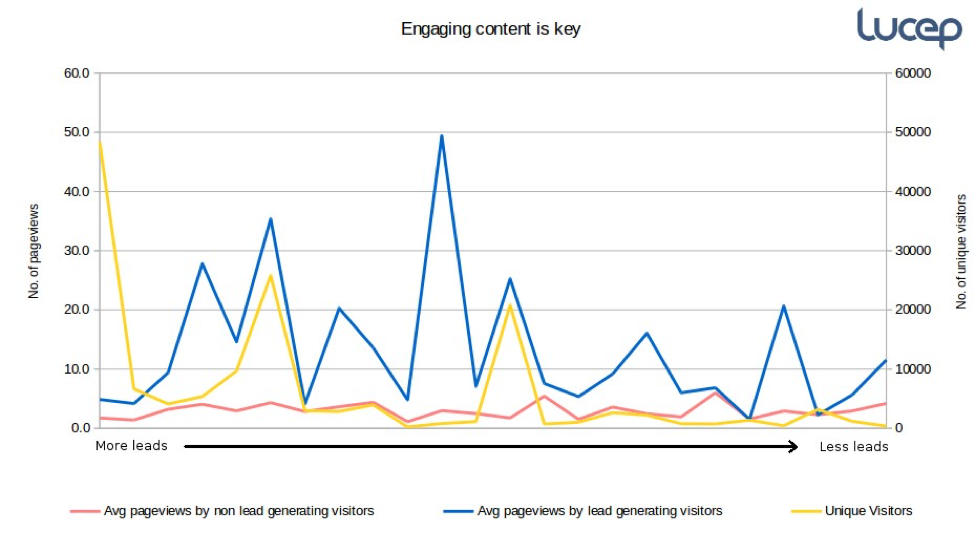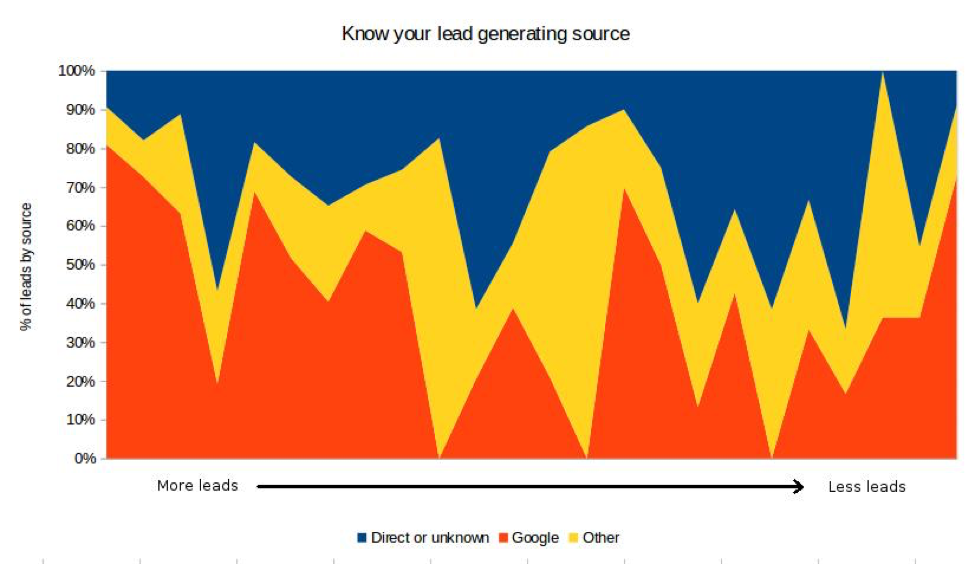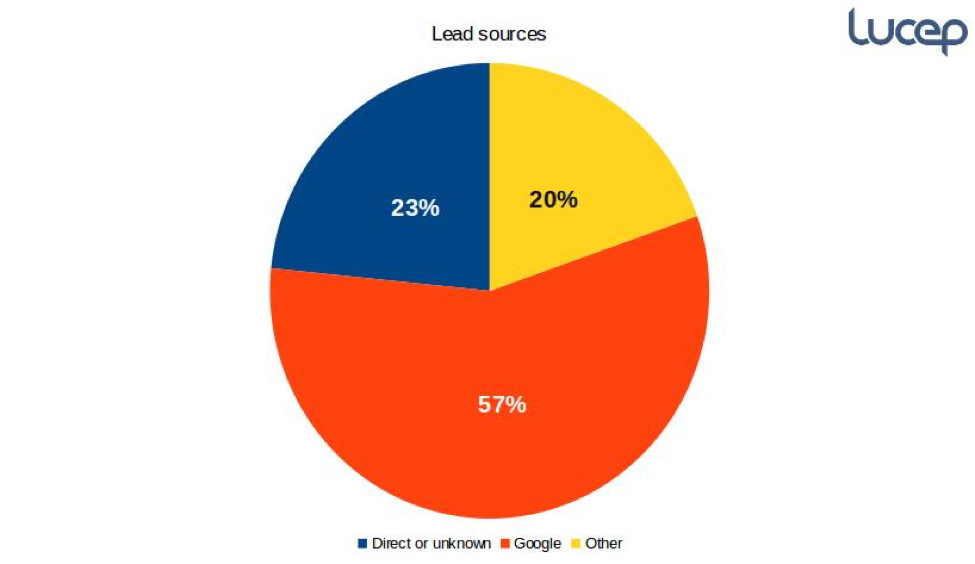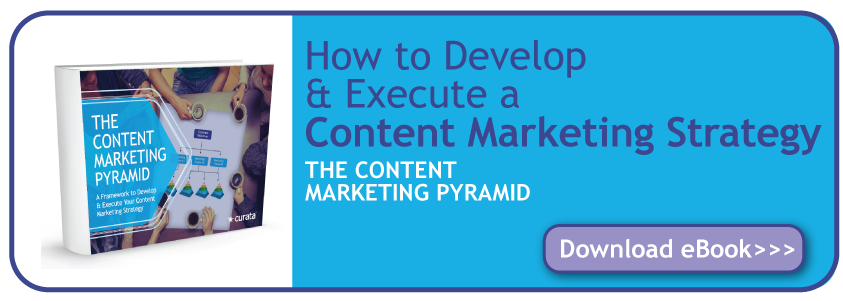- Share Boost Engagement and Traffic to Accelerate Lead Generation on Facebook
- Share Boost Engagement and Traffic to Accelerate Lead Generation on Twitter
- Share Boost Engagement and Traffic to Accelerate Lead Generation on Linkedin
- Share Boost Engagement and Traffic to Accelerate Lead Generation via email
Unlike the latest summer Hollywood blockbuster, a blog or website’s success is not as much a matter of fate or the fickleness of your audience. It’s a fairly clearly defined science that any good content marketer should be able to implement as a concise, data-driven exercise. I’m the co-founder of a company—Lucep—that offers a B2B tool that accelerates website lead generation. So we have the data to find out exactly what makes one website more successful than the rest.
To this end, we sifted through analytics data to map traffic sources, page views, and leads generated online by clients using our website widget and mobile app.

The chart above is divided (from left to right) into sets of websites, with those enjoying the most lead generation on the left, and increasingly less leads as you move right. On the vertical axes, you have pageviews and uniques.
No Engagement, No Lead Generation
The pink line shows average pageviews by visitors who did not convert into leads. These are visitors uninterested in the content, which in turn leads to lackluster engagement and low pageviews. Note that this doesn’t mean all of them aren’t potential leads. It just means that the content you have was not able to engage them. It could be because of a fault in your audience targeting, your content plan, or both.
Uniques vs Engagement
The set of websites on the right with the most lead generation have the highest number of unique visitors. That’s the best sign of a good, healthy website. However, it doesn’t necessarily mean it’s optimized to maximize conversions. This is why you want to see the blue line, indicating average pageviews by lead generating visitors.

It’s important because you can get more leads from existing traffic by increasing engagement. As you can see in the chart above, the set of sites in the middle have a sky-high level of engagement that has boosted lead generation compared to the set next to them. Those are getting more traffic, but with lower engagement. This means you can get more leads and sales than competitors who get more traffic—if you can better engage your visitors.
Best Practices for Driving Higher Engagement
Ok, so now you want to drive higher engagement. One thing that works better than almost anything else is to create a content plan based on buyer personas. However, most people want to write about what they know about and want to talk about. So a sales manager wants to talk about how to generate more sales and revenue, building and managing sales teams, etc. That’s fine if your buyers are also sales managers interested in the same thing. But everyone else will just glance at this content and move on.
To identify who your buyers are, create buyer personas to identify and flesh out each target group you want as customers. Each persona will have its own set of pain points. These are the customer needs that you must address in your content. Generate keywords from the pain points, and write about content focused on these keywords. It may not be what you do, and may even have no direct bearing on your company or product. But it will be what your buyers want to read about. This is what drives higher engagement.

Creating Buyers Personas
How do you actually do this? Let me give you an example. We did an exercise creating buyer personas for CEOs, sales managers, and marketing heads. One of the marketing heads is a digital marketing manager. We identified two key pain points for this particular persona that they wanted to know:
- What makes a good website?
- How to increase online lead conversion rates?
One of the keywords we came up with to address both these concerns was “engaging content,” and then wrote an article for this keyword. That’s what you’re reading right now!
Case Study Number One
Let’s examine a few sites we looked at among our clients for examples of how targeted content drives huge engagement. Take a look at Paul Hype Page & Co chartered accountants. This site has massive engagement, resulting in leads flowing in from all over the world.
Paul Hype Page & Co provide company incorporation and related services in Singapore. They’ve created a content repository in which each piece of content specifically targets every single need their customers have. The homepage workflow is so clear, any visitor landing on it knows exactly where to click and read an article telling them what they want to know. The only call to action (CTA) after reading the content is the visitor either calls or asks for a callback. Both of which happen frequently. The content is extremely targeted and engaging, and positions the company as an expert in the services a visitor is looking for.
Case Study Number Two
Another example is The Indian Handwritten Letter Co (TIHLC). It’s a startup that writes and sends handwritten letters on behalf of individuals and business users. The Indian Handwritten Letter Co. was doing pretty nicely as a three year old startup, but their traffic recently smashed through the roof when they got coverage in startup media portal Your Story. Suddenly everyone was talking about how TIHLC was reviving the lost art of handwritten letters. The lead generation from callback requests via their website widget increased massively. This is the kind of engagement good content creates, even if it’s not on your own site. All content you create should be optimized to maximize engagement: social media snippets, videos, infographics, media coverage—everything.
Four Simple Tips
What more can you to do drive higher engagement? Follow these best practices.

- Create useful and relevant content based on buyer personas.
- Track the engagement metrics. This means examining which pages have lower bounce rates, higher session durations, more backlinks, comments, and social shares, etc.
- Start using more videos. According to Cisco, a full 82 percent of consumer web traffic is projected to be video by 2020.
- Offer a click to call feature on your website. Over 50 percent of website visitors who call you to talk are qualified leads. Only two to three percent of those who don’t call will convert (conversion rates may vary by industry). According to Lucep research, adding a click to call tool drives engagement with website visitors, and can increase conversion rates by over 72 percent. It’s especially effective in converting website visitors who access your site using a mobile device.
Target the Right Traffic Sources
You can create the most engaging content possible, but it won’t be useful if your traffic is coming from the wrong sources. Here’s the traffic source chart for the same set of websites examined in the engagement chart.

You probably don’t need to look at the chart to know search traffic from Google converts into more leads than traffic from other sources. Google sends more than half (57 percent) of the lead generating traffic Lucep clients get.

Direct traffic from bookmarks and people typing in the website URL accounts for 23 percent of lead sources for Lucep clients. This is usually from repeat visitors, people who know the company, and/or leads advised to check out the website by someone in marketing or sales.
Only the remaining one-fifth (20 percent) of lead sources is website traffic from social media, referrals, email marketing, etc.
So we should focus on the primary lead sources sending us actual customers. Not visitors who are just passing through. This means Google, referrals, and one or two other key sources where you know your buyers can be found.
Lucep is a B2B SaaS platform. We get a relatively higher number of visitors from Facebook, but they don’t convert half as well as the fewer visitors clicking through from LinkedIn. Again, you don’t need to look at a chart to understand this.
LinkedIn is a B2B networking platform primarily used by decision makers. I.e. CEOs, startup founders, business owners, managers, and executives. These are the same decision makers who make up the bulk of Lucep’s ideal buyer personas. If you focus your marketing efforts on channels where your buyers are, the traffic you get will generate more leads.
Conclusion
You need to create engaging content, and ensure it gets distributed through the channels which lead straight to your buyers. That’s all it takes. You can plan it and implement it in a clear and scientific way that leaves nothing to chance. Use a documented content strategy to systematically achieve this lead generation. Download The Content Marketing Pyramid: A Framework to Develop & Execute Your Content Marketing Strategy eBook for efficient, effective content strategy.










